How TV and big retail changed how Melbourne did Christmas in the 1960s
The way we shopped for Christmas changed completely in the 1960s, as big retail took hold in Melbourne. And did the rise of TV shape how we cooked for our seasonal celebrations?
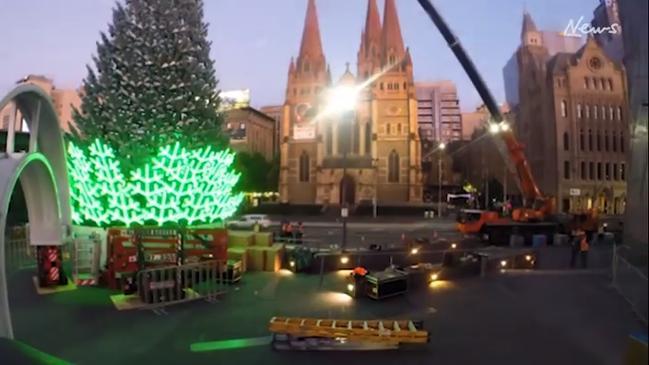
VIC News
Don't miss out on the headlines from VIC News. Followed categories will be added to My News.
A rapidly growing population and the influence of television changed Melbourne and the way its citizens celebrated Christmas in the 1960s.
When television was introduced to Melbourne in 1956, initially very few people had those great, glowing orbs in their lounge rooms but Aussies have always been great adopters of new technology, and the new medium took off quickly.
Many households had their own TV sets by the 1960s, and we took in a televisual diet of variety shows and imported programs, most often from the United States.
1950s: MELBOURNE MAGIC HERALDS NEW XMAS TRADITIONS
60 YEARS OF MYER CHRISTMAS WINDOWS
VINTAGE ADS YOU’D NEVER GET AWAY WITH TODAY
Christmas dinners were still very British or European in flavour, but the influence of American TV might explain the rise of the turkey on our Christmas tables.
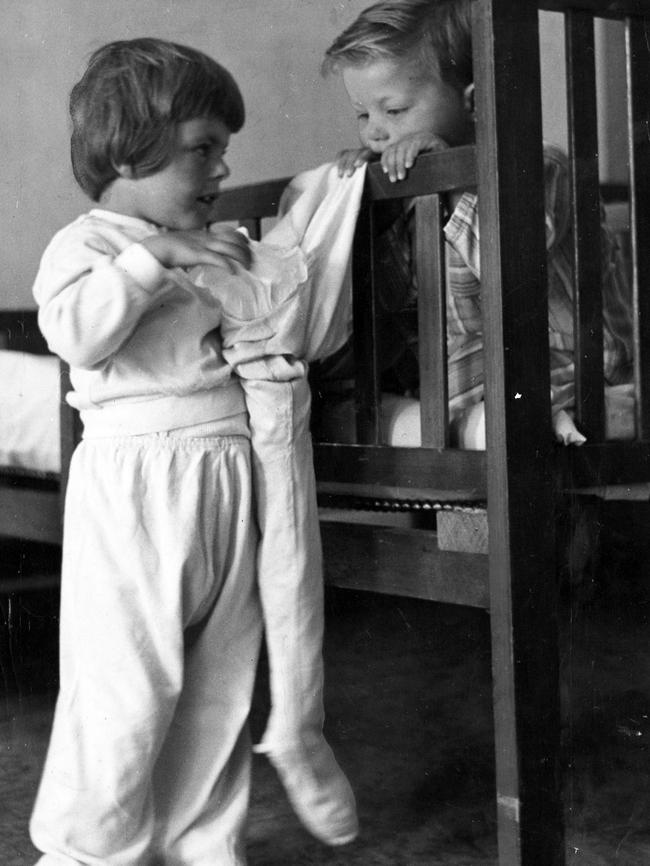
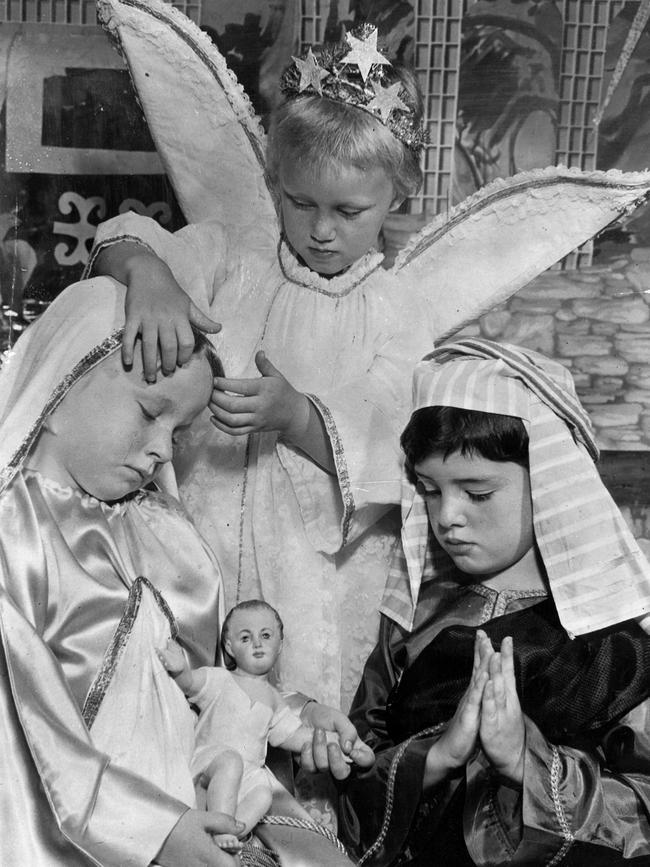

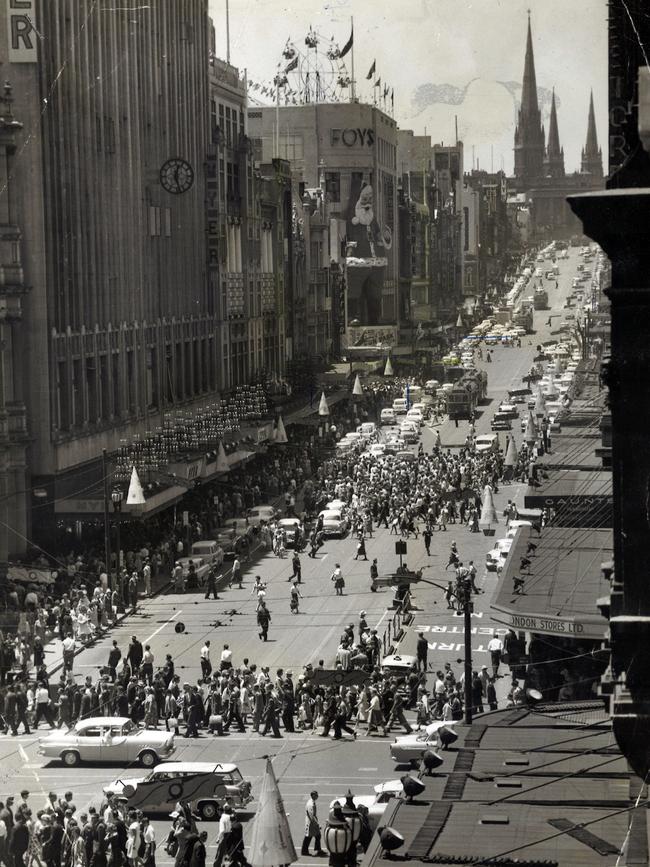
The turkey has been an American feast staple since the Pilgrims first celebrated Thanksgiving, and while a goose or turkey was also a part of the British tradition too, here in Australia the humble chicken was a much more common Christmas dish.
By the time the Australian Women’s Weekly’s Old-Time Christmas Cookbook was published in December 1970, the turkey was featured in the Ham and Poultry section but it was a distant fourth behind recipes for ham, chicken and duck.
The turkey baking instructions came with a recipe for sherried apple sauce for those who prefer a sauce that was less sweet than traditional US-style cranberry sauce.
Our antipodean love of a seafood Christmas did not rate a mention in the entire cookbook.
Mind you, the 1960s were still the days when crayfish were affordable luxury for many people and not a luxury exported to hungry seafood lovers overseas.
Housewives preparing for Christmas 1965 were encouraged by the Weekly to bake gifts for their friends via its Christmas Gifts from Your Kitchen booklet.
Baking can’t have been much fun in a house with no airconditioning, but the booklet offers a range of more than 40 recipes to tickle the tastebuds of your family and friends as a Christmas gift.
It recommends New Year Shortbread as a good-luck charm, a Scottish Hogmanay tradition, cheesy Salad Biscuits for a savoury treat, overlapping triangles of pastry and praline Cookie Christmas trees piled high on a platter, traditional puddings and Christmas cakes, homemade marshmallow and toffee apples, truffles and some rather novel and intricate ideas, all perfected in the Leila Howard Test Kitchen.


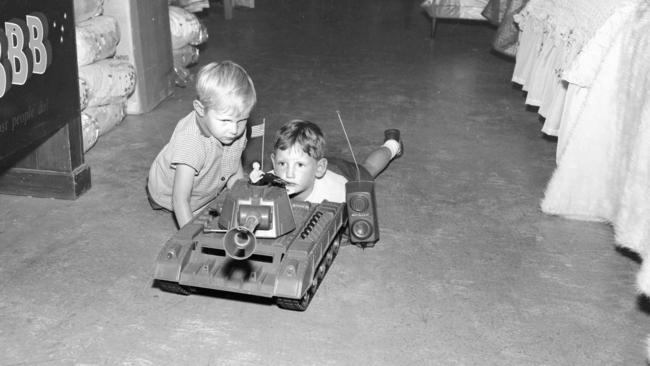
The Sweet Christmas tree required squares of toffee-covered nuts wrapped in red and green cellophane, a chicken wire cone, a pencil, an empty cotton reel, coloured ribbon and, almost certainly, an engineering degree.
Then, there was the Popcorn Ball — two big basins of popcorn covered in honey, butter and sugar, pressed together into a pretty bauble shape that was dressed with ribbons and a dangling bauble of its own.
Marzipan fruits, a horseshoe of candied almonds, decorated with candied chocolates and mint leaf jubes were among the gift ideas, along with handmade cardboard reindeer and Santas filled with sweets and treats like walnut pralines and caramels made with love and loads of elbow grease.
There was even a guide to making your own cardboard kangaroo to present your homemade toffee brazil nuts.
Or, you could try making a cake snowman using your favourite fruit cake mix or (quelle horreur!) a packet cake mix.
Take a look at the all the recipes via the National Library of Australia’s Trove archive here.
The way we shopped for Christmas also began to change in the swinging ‘60s.
Melbourne shopping changed forever on October 3, 1960, when the brand new Chadstone Shopping Centre opened to the public, just in time for the pre-Christmas rush.
It was Melbourne’s first self-contained regional shopping centre, owned by the Myer Emporium, and it revolutionised the way we shopped.

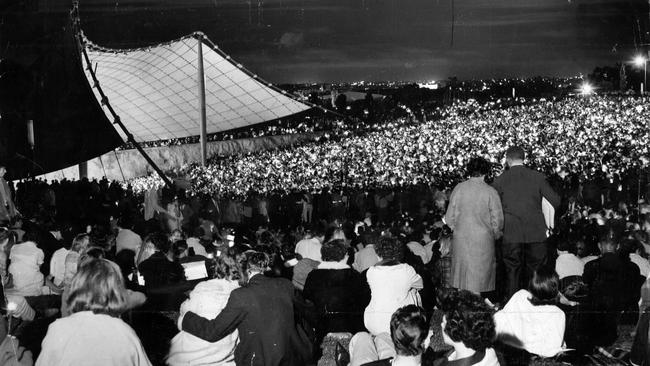
The first incarnation of Chadstone was as an open-air shopping strip — like the “High Street” shopping strips of suburban Melbourne, but surrounded by acres of free parking and with a Myer at one end and a supermarket at the other.
The £6 million shopping centre was designed by American architects and based on the regional shopping mall trend observed by Myer executives in the 1950s.
It took a while, but the trend to suburban shopping centres caught on.
Myer opened a second, fully indoor shopping centre at Northland in 1966 with a central hub with three separate malls and a multistorey Myer store.
Buckleys and Nunn even ventured out to Preston to open a branch there.
Northland also featured a European-style market in a separate round building to attract the large numbers of European migrants in the area at the time.
Others followed in quick succession.
Myer opened Eastland in October 1967 and Southland in September 1968. Westfield’s first Melbourne centre, Doncaster Shoppingtown, opened in September 1969.
All this development in the suburbs took the focus off Christmas shopping in the CBD, once the home of all the big department stores.
Foy and Gibson’s, famous for its rooftop Christmas carnival and the giant Santa that towered from its building at the corner of Bourke and Swanston Streets, closed in the late 1960s when Woolworths bought its landmark city store and David Jones swallowed the business.
The joy of Foy’s at Christmas was captured by amateur filmmaker Fred Daley in the 1960s in a film titled ‘Tis Christmas.
Shot on 8mm film in the mid-‘60s and preserved by the National Film and Sound Archive, this little slice of Melbourne Christmas magic shows kids and parents in their Sunday best enjoying Foy’s rooftop Christmas carnival, gaily decorated city streets, a Viking boat race on the Yarra, a glimpse of Santa, some kids enjoying new toys and summer swimming at a pool.
The Daleys take a trip down the Mornington Peninsula for the summer holidays, with Fred filming part of the trip by mounting his camera to the car.
We see glimpses of Safety Beach, boating and skiing in Port Phillip, a day at one of the peninsula’s back beaches and a trip to Luna Park complete with action shots from the Scenic Railway and the Big Dipper.
The 1960s also saw the rise of American-style big box department stores.
Coles Variety and Woolworths Variety stores existed in the 1960s, but the decade marked the first appearance of Big W (launched in Tamworth, NSW in 1964), Target and Kmart.
Myer swallowed the existing Lindsay department stores in Victoria, based in Geelong, with the aim of going national under the Lindsay Target brand.
By 1973, the company was known simply as Target Australia.
Coles set up its first Kmart discount department store in East Burwood in April 1969, in a joint venture with America’s SS Kresge Company.

Kmart was an instant hit. K1 in Burwood, as it was known in the Coles world, with 100,000 square feet of floor space, 50 departments and 750 car spaces.
Customers queued from 7am to get in and, by the end of the day, 40,000 people had passed through the checkout, spending almost $98,000.
Shopping for the Christmas table changed in the 1960s, too, with a gradual shift away from smaller high street retailers to supermarkets.
Coles had bought the Dickins grocery chain in 1948 and, in March 1960, opened its first “drive-in” supermarket in North Balwyn (it was later rebadged as Coles New World then Coles).
It too was a roaring success, drawing customers for miles around to experience one-stop motorised shopping. Safeway entered the market in 1963. Together with Woolworths and smaller chains such as Nancarrows, SSW and others, self-service supermarket shopping dominated grocery retaining by the end of the 1960s.
Mass production on the level requires to service these massive retail undertakings had an effect on the way we ate and the gifts we gave at Christmas.
Despite the best efforts of the Australian Women’s Weekly, Christmas was still a time of great joy in Australia, as it remains today, but Christmas became a little less “homemade” in the 1960s.


